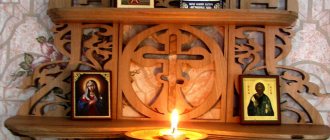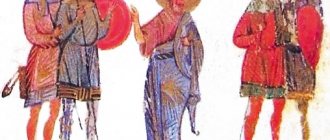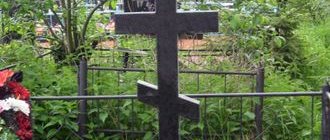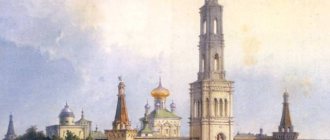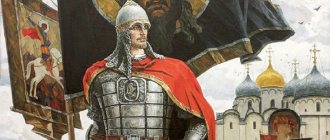Russian hut, Russian stove, red corner - all these expressions cannot be avoided when talking about the life of Russian people in the old days. Some traditions have been preserved to this day. Even in modern apartments, some people equip that very red corner that has played a big role in the lives of many generations of Russians. And this is not just a tribute to tradition. The red corner in people's homes has had a certain sacred meaning for a long time.
Photographer: Sergey Suvorov
But time moves inexorably forward. Some of the life of our ancestors becomes a thing of the past, and some are completely forgotten. The concept of the red corner will not escape this bowl. Although, the expression is still found in literature, films, and plays. To better understand what role this part of the Russian hut played and where the red corner was located, you should definitely get acquainted with this material, which was published by the employees of the Abdulinsky Museum of History and Local Lore.
Photographer: Sergey Suvorov
Construction of a traditional Russian hut
In ancient times, for Russians, the hut personified the entire Universe; there were heaven and earth (floor and ceiling), cardinal directions (walls) and the “lower world” (cellar). Moreover, ancient people associated the east and south with sunrise, spring, noon, summer, life and warmth, and the north and west with sunset, winter and autumn, cold and death. Based on this, our ancestors sought to arrange their home in such a way that it would be impossible for the forces of evil that came from the north and west to enter it. But the forces of goodness and warmth should not have seen any obstacles in their path and had the opportunity to freely penetrate into the hut. And since in those distant times windows had not yet been invented, the only opening leading into the house was the door. The doors of all Slavic huts, without exception, were turned to the south, but the stove was placed opposite the door, that is, in the north, a place from where evil and cold could creep into the house. Over time, the place of the door in the Russian hut changed, that is, the choice of wall for the door became unimportant, but the stove always remained on the north side, and the “red corner” was located diagonally from the stove, in the southeastern part of the hut. This arrangement remains unchanged to this day.
Excerpt characterizing the Red Corner
Kutuzov sat, with his gray head drooping and his heavy body slumped, on a carpeted bench, in the very place where Pierre had seen him in the morning. He did not make any orders, but only agreed or disagreed with what was offered to him. “Yes, yes, do it,” he responded to various proposals. “Yes, yes, go, my dear, and have a look,” he addressed first one or the other of those close to him; or: “No, no, we’d better wait,” he said. He listened to the reports brought to him, gave orders when his subordinates required it; but, listening to the reports, he seemed not to be interested in the meaning of the words of what was said to him, but something else in the expressions of the faces, in the tone of speech of those reporting, interested him. From long-term military experience, he knew and with his senile mind understood that it is impossible for one person to lead hundreds of thousands of people fighting death, and he knew that the fate of the battle is not decided by the orders of the commander-in-chief, not by the place where the troops are stationed, not by the number of guns and killed people, and that elusive force called the spirit of the army, and he watched over this force and led it, as far as it was in his power. The general expression on Kutuzov’s face was one of concentrated, calm attention and tension, which barely overcame the fatigue of his weak and old body. At eleven o'clock in the morning they brought him the news that the flushes occupied by the French were again repulsed, but that Prince Bagration was wounded. Kutuzov gasped and shook his head. “Go to Prince Pyotr Ivanovich and find out in detail what and how,” he said to one of the adjutants and then turned to the Prince of Wirtemberg, who was standing behind him: “Would your Highness be willing to take command of the first army.” Soon after the prince's departure, so soon that he could not yet get to Semenovsky, the prince's adjutant returned from him and reported to his Serene Highness that the prince was asking for troops. Kutuzov winced and sent Dokhturov an order to take command of the first army, and asked the prince, whom he said he could not do without at these important moments, to return to his place. When the news of Murat’s capture was brought and the staff congratulated Kutuzov, he smiled. “Wait, gentlemen,” he said. “The battle has been won, and there is nothing unusual in the capture of Murat.” But it's better to wait and rejoice. “However, he sent an adjutant to travel through the troops with this news. When Shcherbinin rode up from the left flank with a report about the French occupation of flushes and Semenovsky, Kutuzov, guessing from the sounds of the battlefield and from Shcherbinin’s face that the news was bad, stood up, as if stretching his legs, and, taking Shcherbinin by the arm, took him aside . “Go, my dear,” he said to Ermolov, “see if anything can be done.” Kutuzov was in Gorki, in the center of the position of the Russian army. The attack directed by Napoleon on our left flank was repulsed several times. In the center the French did not move further than Borodin. From the left flank, Uvarov's cavalry forced the French to flee. In the third hour the French attacks stopped. On all the faces who came from the battlefield, and on those who stood around him, Kutuzov read an expression of tension that had reached the highest degree. Kutuzov was pleased with the success of the day beyond expectations. But the old man’s physical strength left him. Several times his head dropped low, as if falling, and he dozed off. He was served dinner. The outhouse adjutant Wolzogen, the same one who, driving past Prince Andrei, said that the war must be im Raum verlegon [transferred into space (German)], and whom Bagration hated so much, drove up to Kutuzov during lunch. Wolzogen arrived from Barclay with a report on the progress of affairs on the left flank. The prudent Barclay de Tolly, seeing the crowds of wounded running away and the upset backsides of the army, having weighed all the circumstances of the case, decided that the battle was lost, and with this news he sent his favorite to the commander-in-chief. Kutuzov chewed the fried chicken with difficulty and looked at Wolzogen with narrowed, cheerful eyes. Wolzogen, casually stretching his legs, with a half-contemptuous smile on his lips, approached Kutuzov, lightly touching the visor with his hand. Wolzogen treated His Serene Highness with a certain affected carelessness, intended to show that he, as a highly educated military man, was allowing the Russians to make an idol out of this old, useless man, and he himself knew with whom he was dealing. “Der alte Herr (as the Germans called Kutuzov in their circle) macht sich ganz bequem, [The old gentleman settled down calmly (German)] - thought Wolzogen and, looking sternly at the plates standing in front of Kutuzov, began to report to the old gentleman the state of affairs on the left flank as Barclay ordered him and as he himself saw and understood it. - All points of our position are in the hands of the enemy and there is nothing to recapture, because there are no troops; “They are running, and there is no way to stop them,” he reported. Kutuzov, stopping to chew, stared at Wolzogen in surprise, as if not understanding what was being said to him. Wolzogen, noticing the excitement of des alten Herrn, [the old gentleman (German)] said with a smile: “I did not consider myself to have the right to hide from your lordship what I saw... The troops are in complete disorder...” “Did you see?” Did you see?.. – Kutuzov shouted, frowning, quickly getting up and advancing on Wolzogen. “How do you... how dare you!..”, he shouted, making threatening gestures with shaking hands and choking. - How dare you, dear sir, say this to me? You don't know anything. Tell General Barclay from me that his information is incorrect and that the real course of the battle is known to me, the commander-in-chief, better than to him. Wolzogen wanted to object, but Kutuzov interrupted him. - The enemy is repulsed on the left and defeated on the right flank. If you have not seen well, dear sir, then do not allow yourself to say what you do not know. Please go to General Barclay and convey to him the next day my absolute intention to attack the enemy,” Kutuzov said sternly. Everyone was silent, and all that could be heard was the heavy breathing of the out of breath old general. “They were repulsed everywhere, for which I thank God and our brave army.” The enemy has been defeated, and tomorrow we will drive him out of the sacred Russian land,” said Kutuzov, crossing himself; and suddenly sobbed from the tears that came. Wolzogen, shrugging his shoulders and pursing his lips, silently walked away to the side, wondering uber diese Eingenommenheit des alten Herrn. [at this tyranny of the old gentleman. (German)] “Yes, here he is, my hero,” said Kutuzov to the plump, handsome, black-haired general, who was entering the mound at that time. It was Raevsky, who spent the whole day at the main point of the Borodino field.
The meaning of the stove and the “red corner” for the ancient Russians
The stove is heat, which means it symbolizes the sun and is the center of holiness of a given house. The “Red Corner” in a Russian hut is also an equally holy place. And although today many people think that such a corner in the house is associated with the Christian religion, nevertheless, some sources insist that long before the Russians adopted Christianity, there was already a custom of creating a “red corner” in houses. However, according to other sources, in the ancient Russian hut the only shrine was the stove. And only later, after the adoption of Christianity, such corners began to appear in houses.
The relative position of the icons
After the adoption of Christianity, a new tradition appeared in Slavic families - to keep the images of saints at home. Some people today continue to believe in the miraculous power of icons. This explains the careful attitude towards the “red corner”. It was always kept clean.
| The faces that were located in this place were decorated with carvings and flowers. They also placed a lamp with a lit candle here. At special events, the most important guest was seated closer to the “sacred” place. |
The icons were placed in the “red corner”, similar to the church altar: to the left of the face of the Savior stood the Mother of God. On the right side is an image of Nicholas. The Trinity or Crucifixion was placed above the icons of Christ and the Virgin Mary.
The Slavs tried to adhere to the hierarchy and did not place the images of saints larger in size than the image of the Savior or the Virgin Mary. Return to contents
Why the “red” corner?
In Russian, the word “red” has several meanings. The first is a specific color, and the second is a synonym for the word “beautiful”, therefore, “red corner” can also be called a beautiful corner. It is always located in the most visible place, and any guest upon entering the hut from the very first minute should see and understand where the “red corner” is in the house. And since icons are located in this place, those entering must immediately notice them and make the sign of the cross, and only after that greet the owners of the house.
Rituals and their meaning
In the red corner, people not only prayed, they celebrated all religious holidays and the most important events here - the birth of a child, a wedding or a funeral. Almost the entire life of a person was directly connected with this special, sacred place.
Perhaps echoes of the ancient, pagan worship of the sun, which was associated with the red angle, can be seen in the ritual that was preserved until the twentieth century in many regions of Russia. At the beginning of the harvest, the first sheaf was solemnly brought from the field and placed in the most honorable place of the hut. They did the same with the last sheaf at the end of the harvest. These actions, according to popular beliefs, were supposed to provide the family with prosperity and well-being.
The distance to the red corner during a meal or rest determined the hierarchical position of household members or guests, their social status. Among the peasants there were many signs associated with certain residential areas. For example, if people heard a crash, a mouse fuss, or a grasshopper chirping in the corner of the stove, it was believed that this was a harbinger of the death of the housewife, and if she was wearing red, she would soon have to bury her husband.
The most honorable place of the hut was of great importance during wedding ceremonies. The matchmakers sent by the groom were located here. The future husband came here to symbolically ransom the bride from his sisters and girlfriends. From the red corner of her parents' hut the girl was taken to the wedding. Then she went to the house of her newly made husband and sat down next to him in a place of honor at the table - near the shrine with icons.
As A.A. wrote in his aforementioned encyclopedia. Kononenko, in the very first days of a newborn’s life, they bathed it in the red corner. Obviously, this was done to protect the child from evil spells and to enlist the support of higher powers.
“Red Corner” in the apartment
Today, many of us live not in private houses, but in apartments, and those who want to create a “red corner” in their modern home must also adhere to some rules. Of course, the apartments don't have stoves to guide them. Therefore, the sacred corner in the apartment should be opposite the front door, so that whoever enters first sees the holy images in the apartment. Sometimes a modern apartment layout does not provide corners for placing icons, so a “red corner” in a house is not always a corner in the literal sense.
Literature
- Platonov O. A.
[rusinst.ru/docs/%D0%9A_obraz.pdf Red corner] // [www.rusinst.ru/articlesoftheme.asp?rzd=1&tm=15 Russian way of life]. - M.: Institute of Russian Civilization, 2007. - P. 364–365. — ISBN 978-5-902725-05-3. - [happynouruz.narod.ru/semenova/13.htm Red Corner] / M. V. Semenova // We are Slavs! : Popular encyclopedia. - St. Petersburg. : Publishing house "Azbuka-classics", 2006. - 560 p. — ISBN 5-91181-040-9.
- Ware, Timothy.
The Orthodox Church. - London: Penguin Books, 1964. - ISBN 0-14-020592-6.
How to arrange a “red corner” in an apartment?
You can create a sanctuary in your apartment by placing a high table or a special cabinet against the wall and covering it with a beautiful tablecloth or some other elegant material. Place holy images on it. As for the place of the “red corner”, it should be located opposite the front door. When choosing a place for it, you can also focus on the east. To do this, you need to determine where the sun rises in the morning, and place the “red corner” in this part. According to Old Russian, or rather Orthodox, custom, believers are supposed to pray while looking to the east. It is this part of the world that symbolizes goodness, rebirth, faith and hope. As for the height of such an angle, it should in no way be located below the eye line. You cannot look down on holy images. But placing it above eye level is quite appropriate. Ideally, a table or cabinet should have an upper and lower shelf. On the top are placed holy images, candlesticks with candles, a censer, and on the bottom are holy books: the Bible, Gospel, prayer books, church calendars, etc.
Links
- Kuchumova A. S.
[www.folk.ru/Research/kuchumova_krasny_ugol.php Red corner. Position in space (location) as a semantic feature of a thing] (folk.ru) - [nesusvet.narod.ru/ico/books/listok/home.htm Icons in the house] (nesusvet.narod.ru)
| This is a draft article on icon painting. You can help the project by adding to it. |
| : Incorrect or missing image | This article lacks links to sources of information. Information must be verifiable, otherwise it may be questioned and deleted. You may edit this article to include links to authoritative sources. This mark is set July 7, 2014 . |
K:Wikipedia:Articles without sources (type: not specified)
